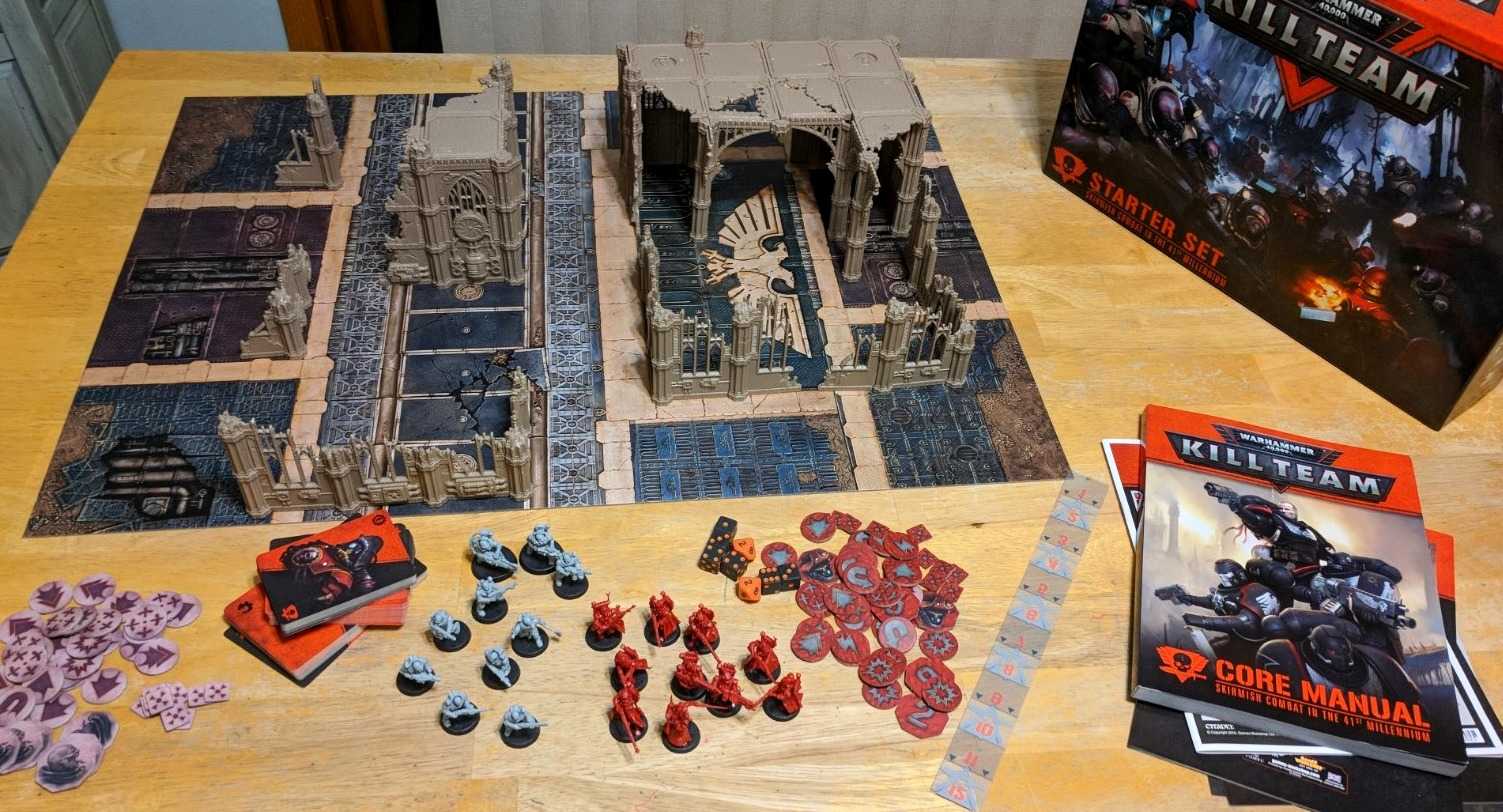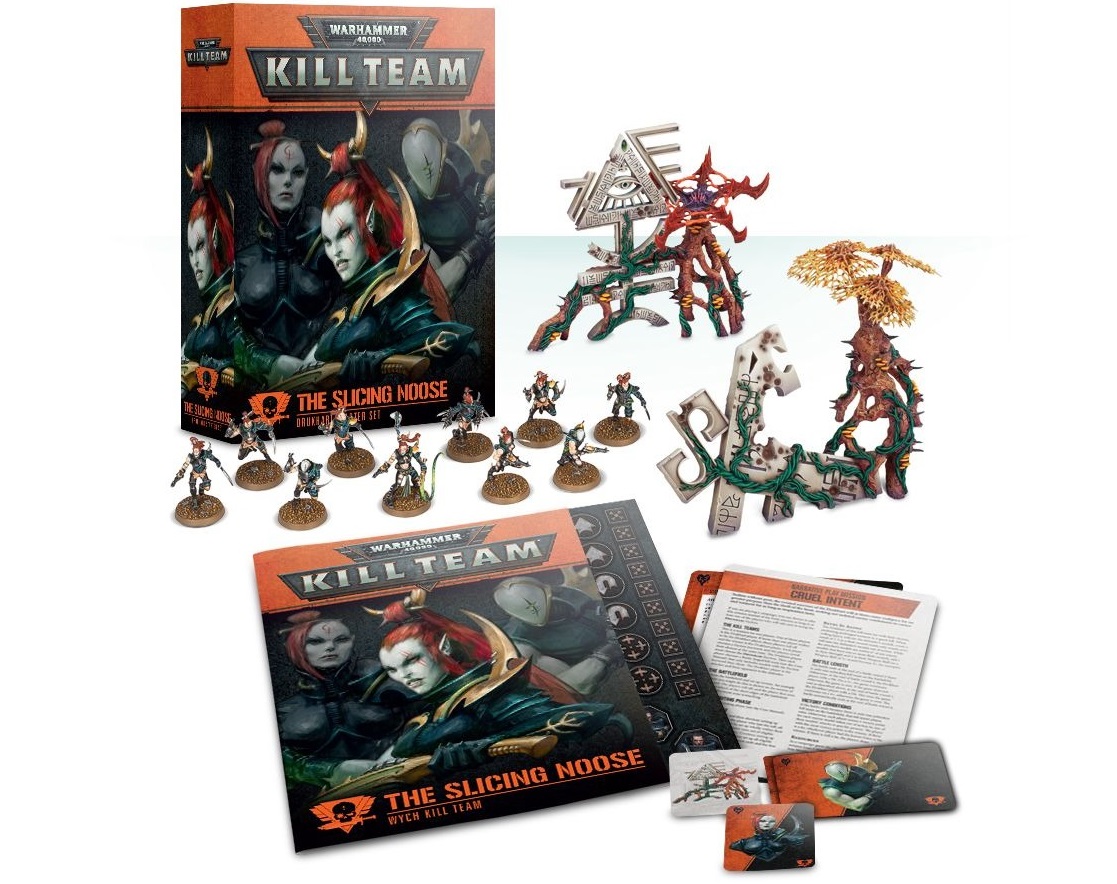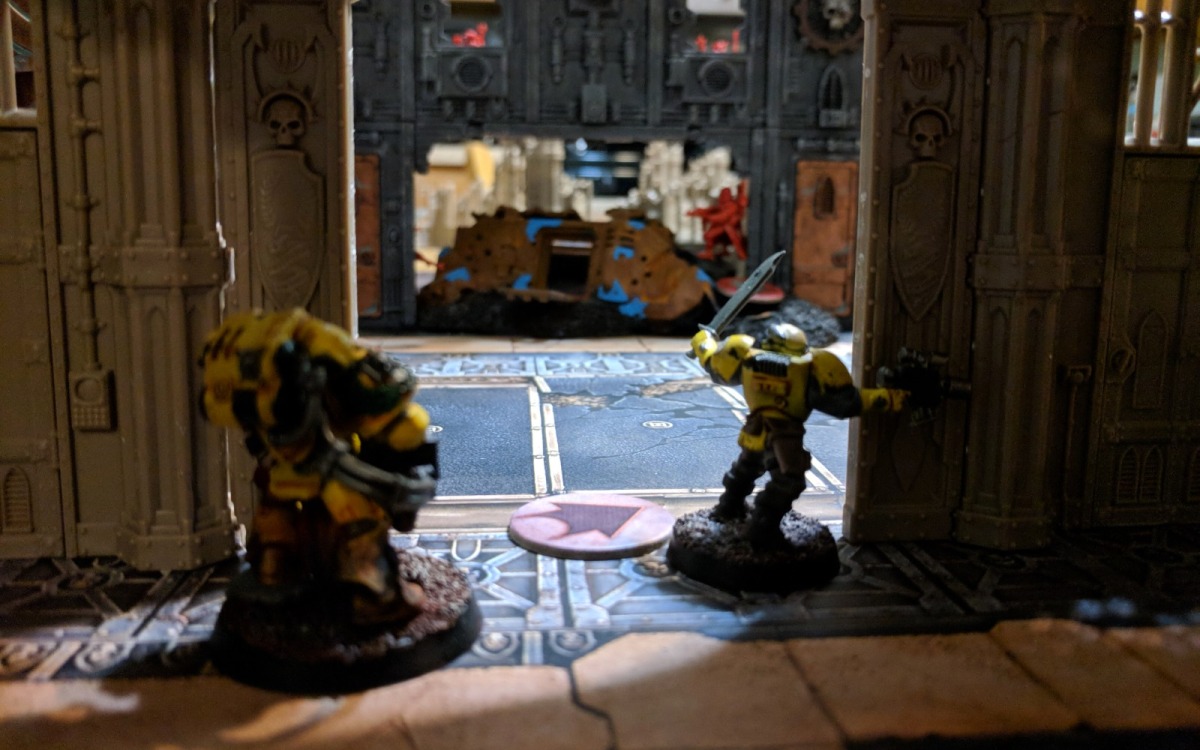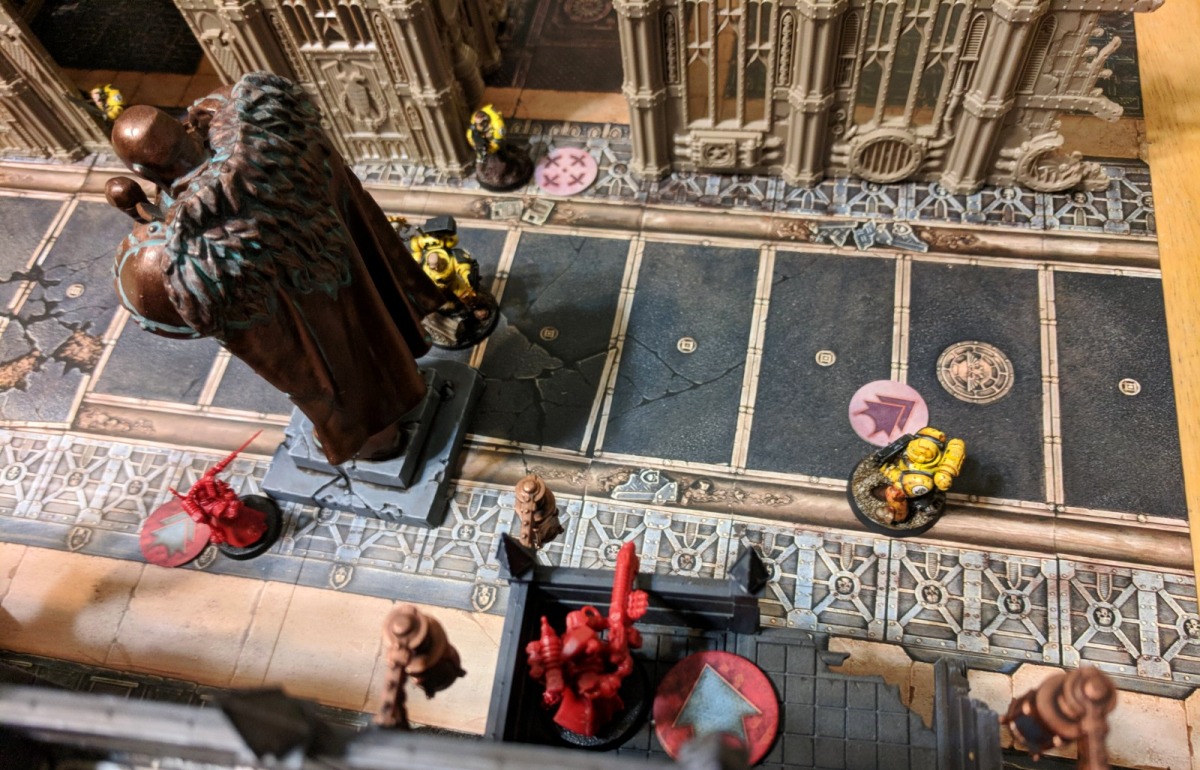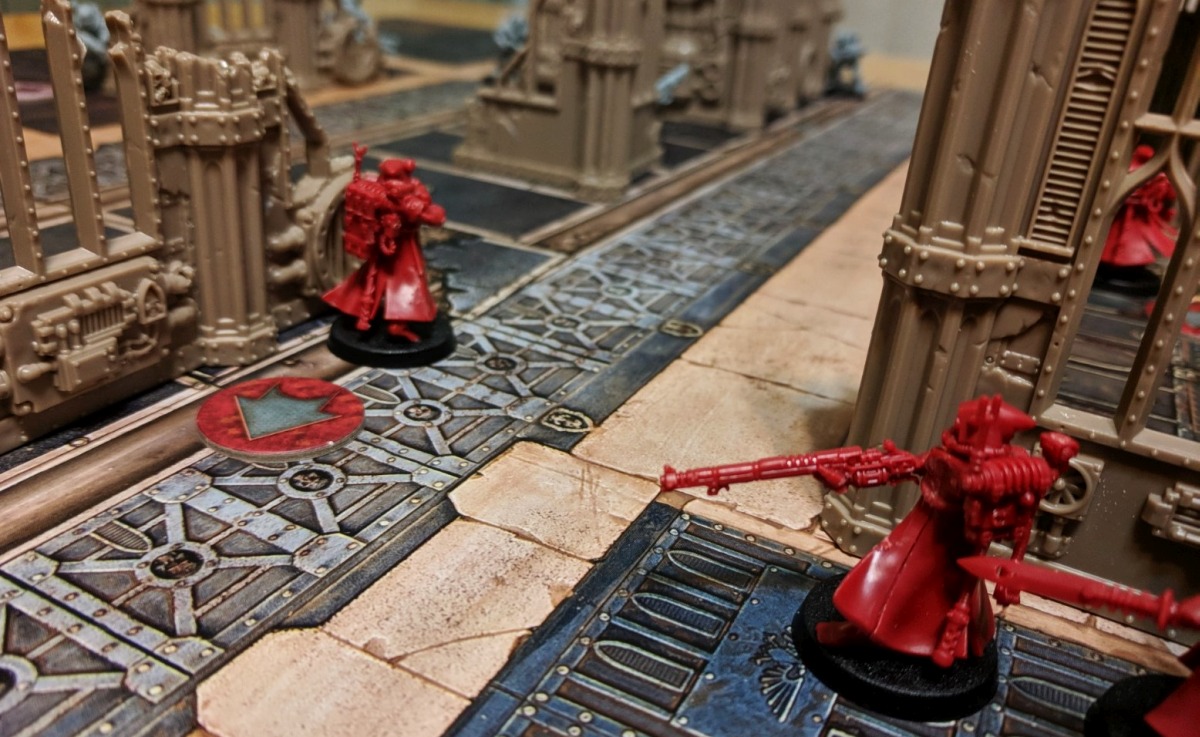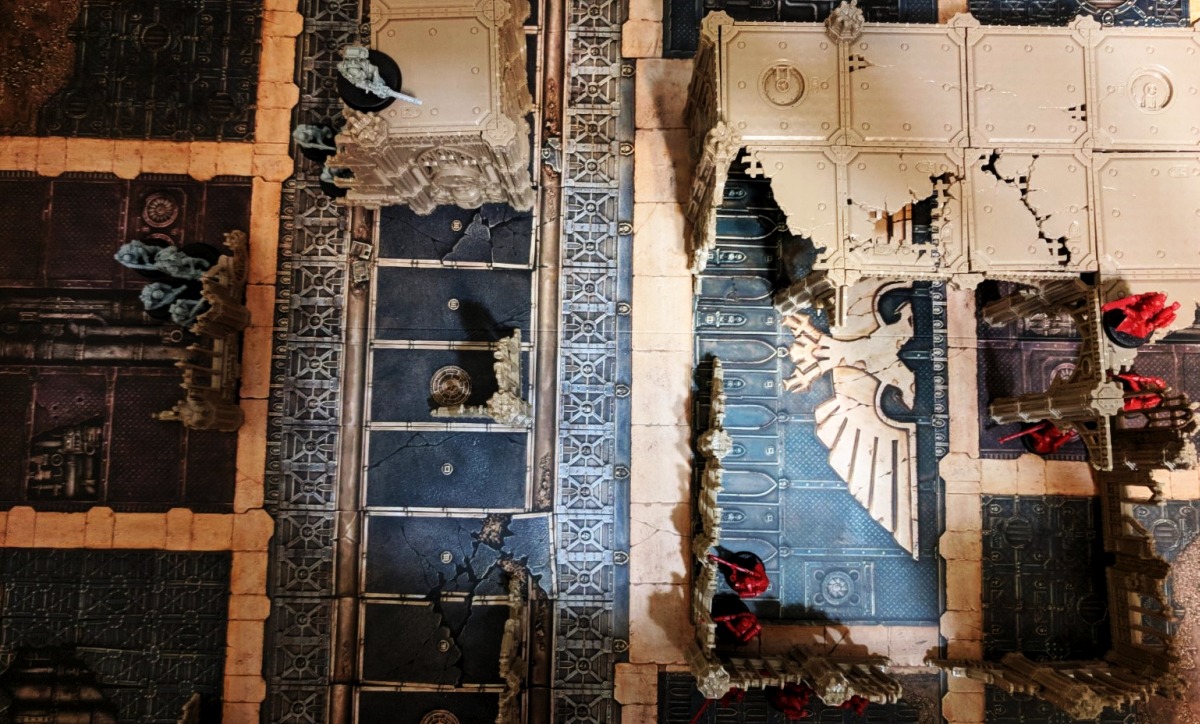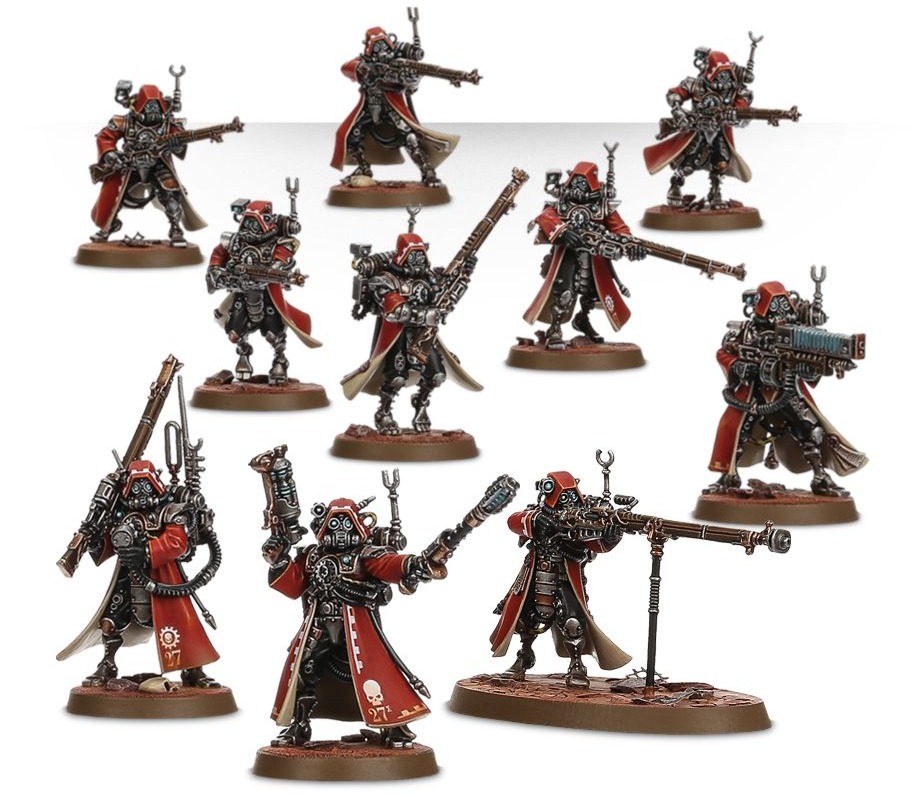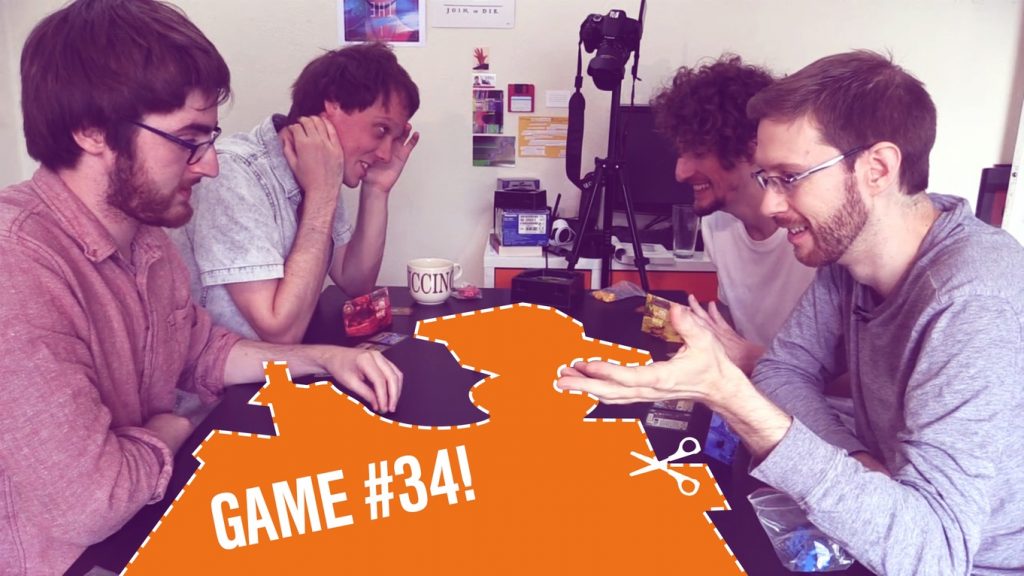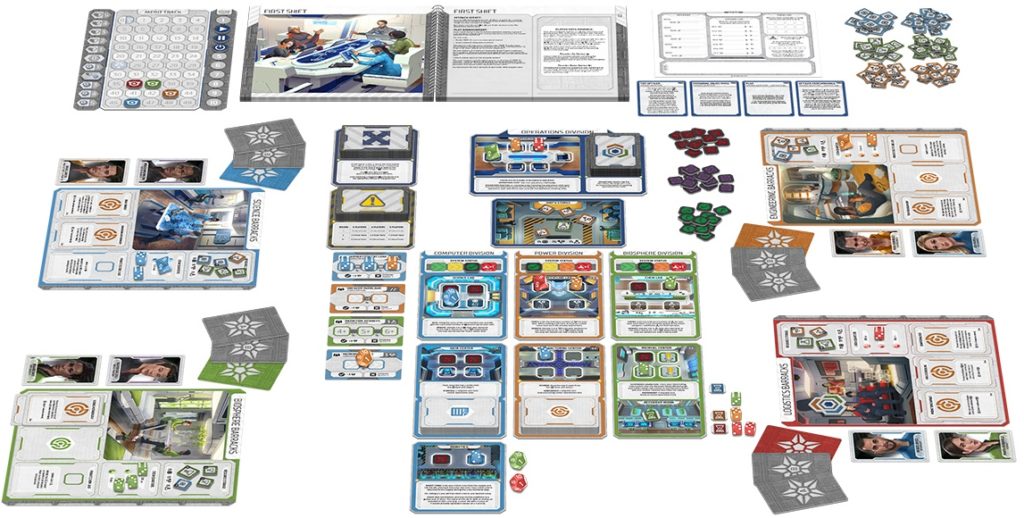Eric: As a teenager, one summer I decided I wanted to learn all of the trick taking card games, a genre that I found strangely fascinating (I suppose this tells you a lot about me as a teenager and the rural midwestern world of the United States where I grew up). I learned the rules for Spades, Pinochle, and Pitch. I sort of learned how to play Bridge. I at least read the rules for Whist and Euchre. At the end of the process, though, I found myself feeling confused. In theory, I knew that the variations between these games should excite and engage me. In practice, I was at a loss to differentiate one from the other. None of them could really hold my interest.
That is probably a strange place to start my review of Games Workshop’s newest offering, Kill Team! A re-release of a variant of Warhammer 40,000, the game’s big selling point is its size. Unlike the sell-your-car-budget armies of its larger cousin, in Kill Team each player uses a small band of 5-20 miniatures to do battle in a space designed to fit on a kitchen table. As I’ve played around with it, though, I find myself at a loss as to what to say.
Kill Team is, at the same time, an exhausting incremental iteration on a tired system… and the best thing Games Workshop has released in years.
Kill Team is very much a riff on a familiar tune. Its grandparent is the new 8th edition of Warhammer 40k (see my review here), a pretty good game that is a substantial improvement on its predecessors while still failing to innovate in the ways found in other rules systems. Spawned from that mold are its parents, Necromunda and Warhammer Underworlds: Shadespire, both aiming for the smaller scale of skirmish battles. If you imagine the incestuous spawn of such a family tree, using the miniatures from the more popular 40k universe, you’ll have a very good idea what’s on offer here.
Because of these close family relationships, I won’t rehash the discussions of basic rules. Anyone really interested to know what I think can read the above review. Instead, let’s note a few things that make Kill Team at least somewhat unique.
One is the activation system. In some miniatures games you have long turns where each player moves all their troops and then the other player responds; others use alternating activations where each player moves a single model or group. The former allows for grand strategic visions but results in huge swings and downtime. The latter creates a more responsive and tactical feel at the cost of overall planning. Intriguingly, Kill Team fuses the two. Movement is done en masse, but the actual combat alternates between models. This creates a unique texture to turns where you have to plan in the big picture but remain flexible as specific models might well die before you get to use them. In my plays of the game so far this has been my favorite element, giving a real sense of risk and reward.
The other change, which I feel more mixed about, is the updated cover system. One of the goals of Kill Team is clearly to make terrain matter. Given my love for the terrain-dense tables of Infinity (the review that started my career with SU&SD!), I applaud this effort. The constant need to crouch down to get a model’s eye view, hugging walls and peeking around corners, creates an immersive experience.
Unfortunately, in practice the way the game accomplishes this goal is by having cover that simply makes it harder to hit models. This, joined with a similar penalty from long range and the narrow likelihood of actually wounding someone means that shooting often feels like you’re spraying your opponents with nerf pellets. Some of this is intentional, trying to force models into hand-to-hand-combat, but it also means a whole lot of rolls ended up boiling down to “Can I roll a 6 on a d6?”
*clatter*
“Nope.”
I could note other small changes. There is a “scouting phase” before the battle begins that allows for tactical cleverness. An advancement system allows limited leveling of some characters within the context of a campaign. There is a new approach to morale, and… look, a deep analysis of the rules is missing the point. Instead, in what follows I want to explain two conclusions I had coming out of my games of Kill Team: why I struggle to be excited, but why I would still (yes!) recommend this game to certain players.
My total lack of exhilaration is really tied up in my love of not just Warhammer, but miniatures games as a whole. Games Workshop has turned a corner as a company, communicating with its customers and pursuing products they want. As a result, they have been posting record-breaking profits and won a great deal of good will from the community, including me. That said, as I pored over the manual for Kill Team and set up for my first game, I couldn’t help thinking “When will this end?”
Just over a year ago, the 8th edition of 40k came out. Since that time GW has unveiled the aforementioned Necromunda and Shadespire, plus a new edition of Age of Sigmar, their fantasy ruleset. Kill Team just came out, and already the drums of advertising have begun beating for Adeptus Titanicus, yet another take on the far future’s grim darkness. That is six games in one year. For those accustomed to board gaming this might seem reasonable, but miniatures games have always rested on the idea of long-term play. Without such a return on investment, the cost in terms of money and time is hard to justify. Even a game like Kill Team, much more affordable than some of those offerings, will probably run you close to a hundred dollars for models and hobby supplies, nevermind the terrain you’ll probably want to make your table come to life, or the time to paint it all. The starter box, while a good deal, is $130 and still doesn’t quite make a full two-player collection.
All of this is made worse by the fact that these games are so similar. My biggest impediment to learning the rules of Kill Team was getting them confused with its cousins. There is just enough variance to force me to flip through the manual, trying to keep straight how wounds or cover or turn structure worked here as opposed to another offering. It left me wishing Games Workshop would be willing to introduce something truly new into the basic structure of the game. It also left me wondering whether GW might be creating a market glut that will hurt them in the long term.
However – and this is a massive however – I think Kill Team might well be a game I would recommend to you if you are looking for a first miniatures experience.
The appeal of tabletop wargames has always been broader than just rules. There is the intimate joy of painting a model, the satisfying thrill of seeing a warband you slaved over charging across the tabletop, and the immersion of storytelling supported by the massive Warhammer universe of novels and video games.
Indeed, Kill Team seems to understand that it isn’t primarily selling a clever ruleset. Take, for instance, the army lists in the manual. Not only are there stats for various soldiers and weapons for each of the sixteen starting factions, there are also several pages of backstory and random tables to determine things like your soldiers’ names and person quirks that have no bearing on gameplay. If you want to try painting some miniatures, Kill Team is backed up by the best lines of sculpts in the hobby bar none:
Perhaps this is what Games Workshop appreciates and I don’t. They consistently market their games as a lifestyle rather than an evening’s fun. From their fiction arm to their “three ways to play” in every rulebook, they try to stress that the rules have always been secondary to the activity of taking little people you painted and shoving them at each other. For someone already involved in other miniatures games, Kill Team feels superfluous. I don’t know why I would play it. For someone uninterested in the lifestyle, it likewise fails. Unlike some miniatures games (look out for my upcoming review of Gaslands), nothing in Kill Team would make me tell my non-miniatures-obsessed friends “you have to play this!”
When I consider someone on the fringe of the hobby though, a teenager like I once was at the game shop or someone into board games who would love to try their hand at painting a little band of Orks or Necrons, Kill Team represents the best possible point of entry. You can buy the starter box, or just the rulebook and some Space Marines, and play a pretty good game with excellent support and backstory. Which isn’t nothing – it just means its not for me.

